RETE is a passive, hydrogel-based ocean health monitor for studying the coral holobiont. It takes a long exposure snapshot of nutrients and ions in the ocean.
The project was showcased at Prime Produce, New York.
Arnav Wagh & Danielle Garcia-Rosales
A much more detailed process can be found HERE
Although coral reefs cover less than 0.1% of Earth’s surface, they support more than 30% of total marine biodiversity. Today these natural wonders are in global decline, threatened by the intersecting effects of multiple stressors. Measuring and understanding the relationships between corals and their complex communities of rich and under-explored microbiota may be the best solution to preserve and restore this important coastal ecosystem.
We envision an underwater symbiotic measuring device based on soft robotic hydrogel biosensors that will inform the health of ocean waters by recording its ion flux during a determined period of time. Imagine taking thirty water samples every day for a month, but stored in just one hydrogel that sits biomimetically amongst the coral holobiont.
RETE’s permeable technology allows chemicals to penetrate the device until equilibrium is met. The ions that were present longer will penetrate deeper, however, the ones that change quickly will rarely enter as deep.
After one full cycle, the gel component of RETE will be analyzed for all possible ions as a sample using affordable Mass spectrometry. Rete provides a tangible, at scale experience and measurement, both for better understanding the ocean and connecting people to it.
Our efforts will establish a new community-based dataset, and open-source, affordable biosensor creation.
After one full cycle, the gel component of RETE will be analyzed for all possible ions as a sample using affordable Mass spectrometry. Rete provides a tangible, at scale experience and measurement, both for better understanding the ocean and connecting people to it.
Our efforts will establish a new community-based dataset, and open-source, affordable biosensor creation.
SEMIOTIC INSPIRATION

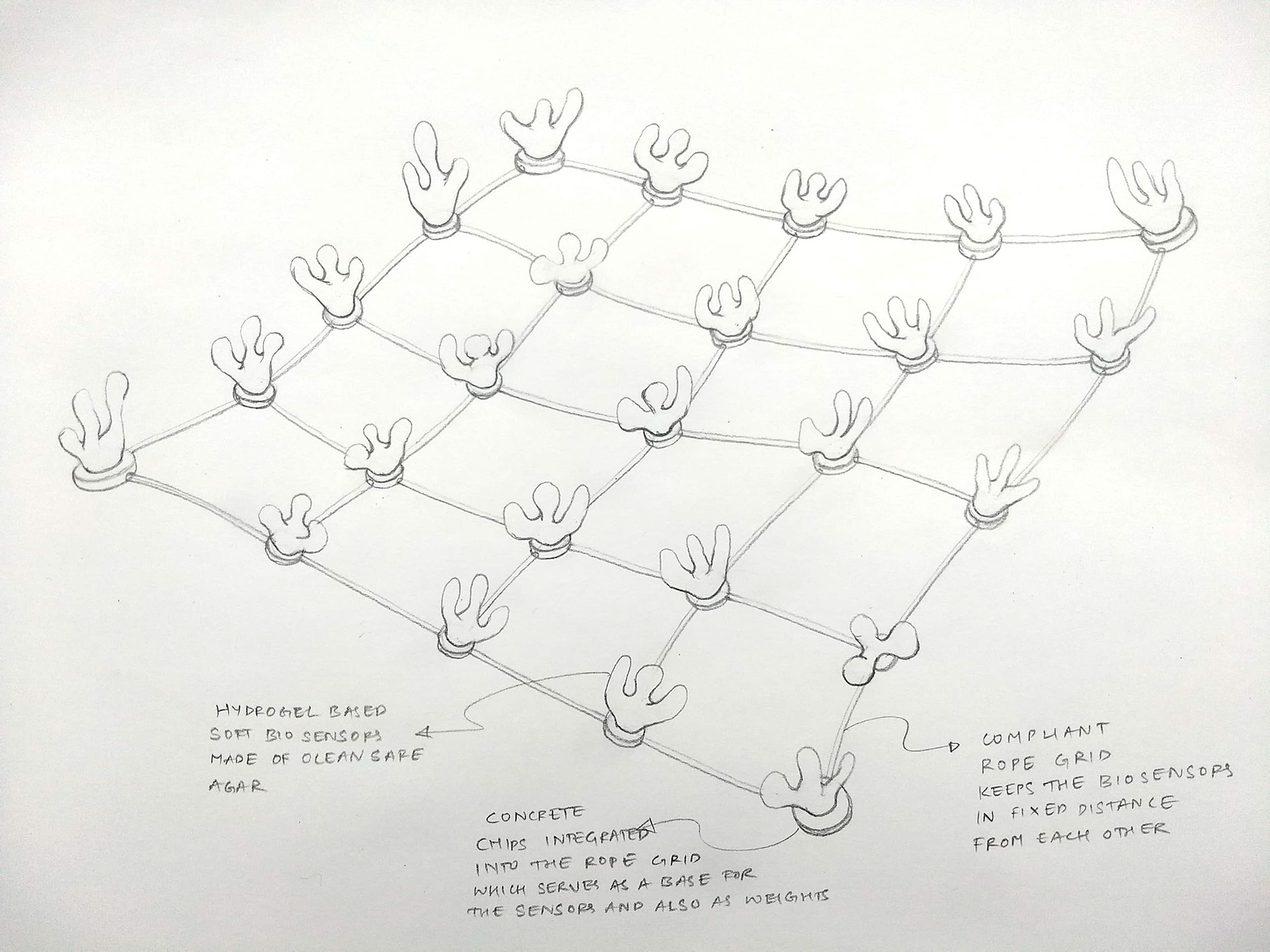
concept sketches
The mechanism/physics is inspired by a specific way of cutting mangoes or fruits which pop out radially when applied pressure from underneath.
The form and materials inspiration came from coral farming methods.
The inspiration for the format and method of deployment came from a fisher man's net.
FABRICATION PROCESS


I moulded agar in varying concentrations to test the stability of the gel. Even at 400% concentration the gel was too brittle to survive any stresses. For the next round of testing I added 5%-10% Xanthan gum to the mix to give it more rigidity.

agar + Xanthan gum
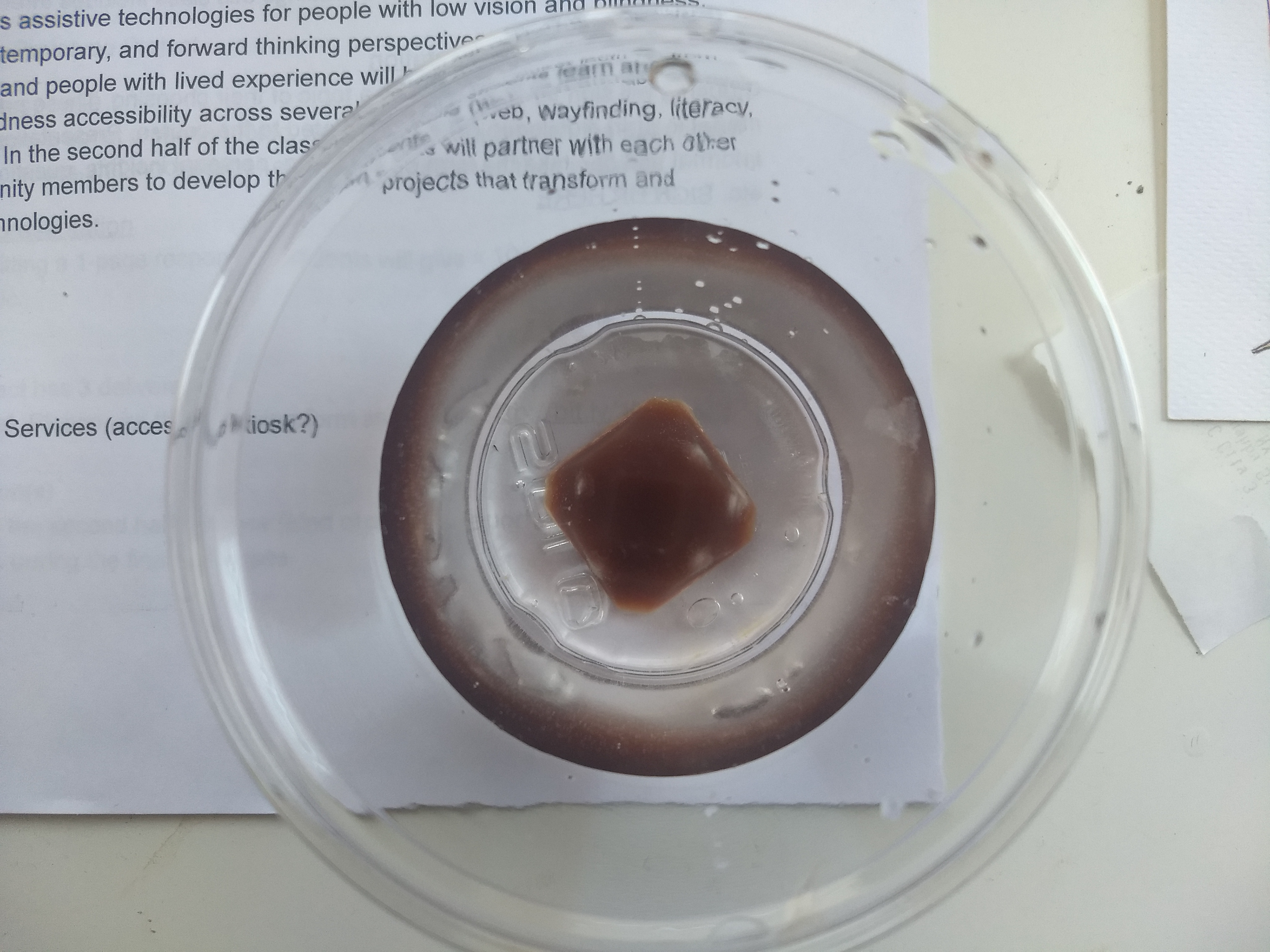
agar + Xanthan gum + blueberry juice for pH marker
We tested the agar in salt water at 3.5% concentration, same as sea water. We also made some samples with blueberry juice added to the mix as a natural pH marker. On average we saw about 50% increase in size which was enough to prove the feasibility of the concept.
FIRST PROTOTYPE
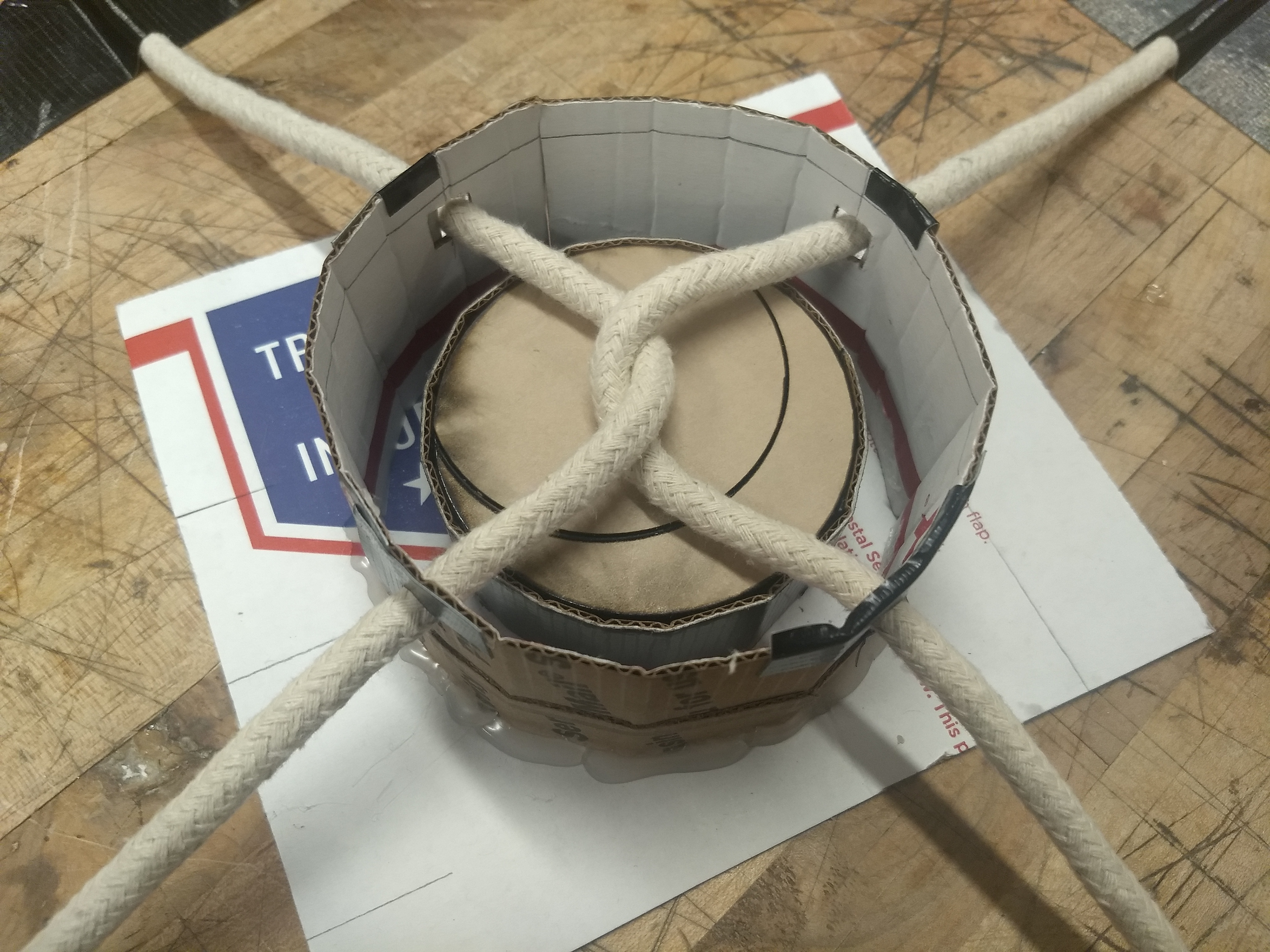
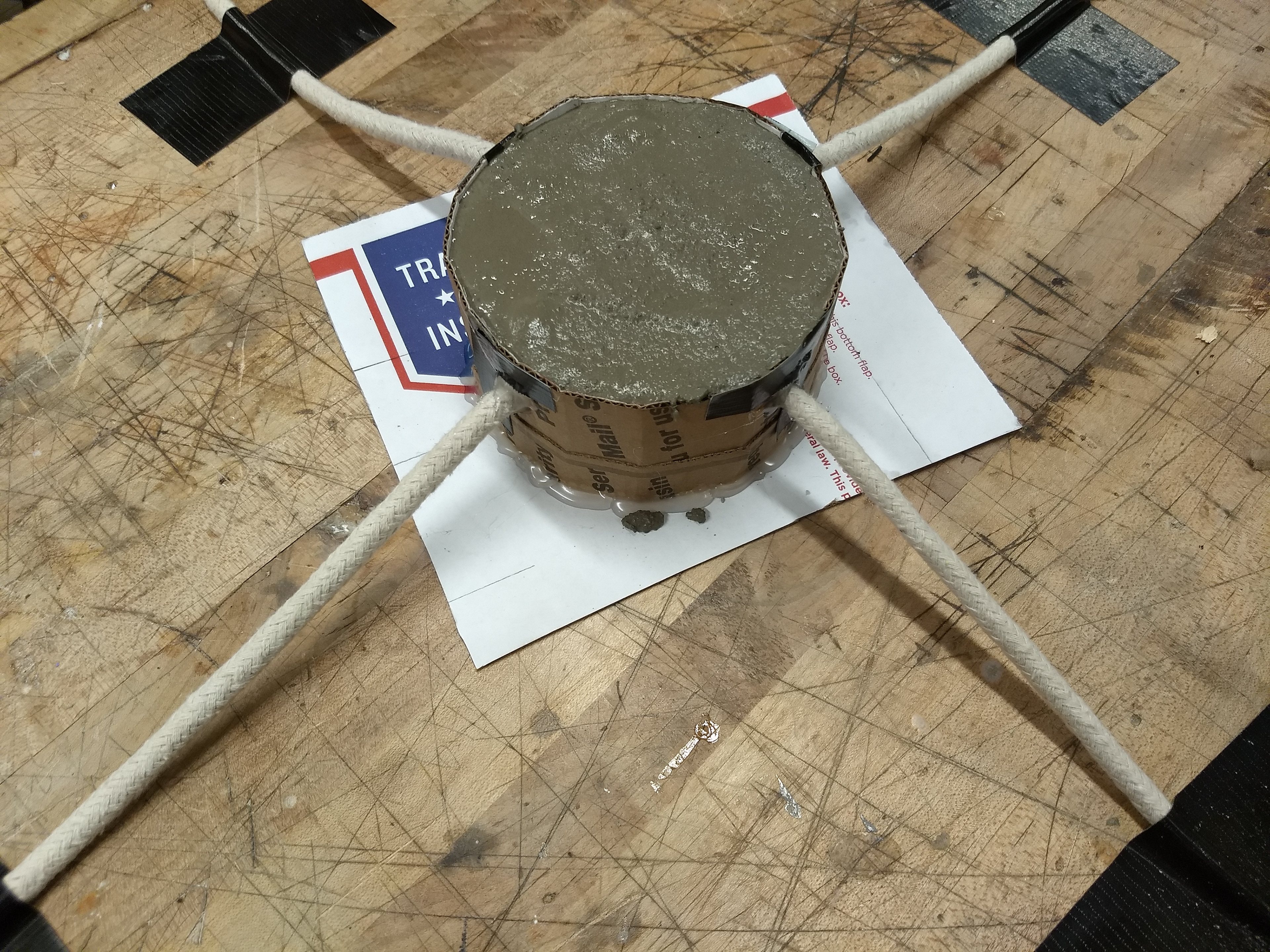
I created a basic mold in cardboard with ropes insert into it. I then poured a mix of Rockite and cement into the mold and let it cure for a few hours.

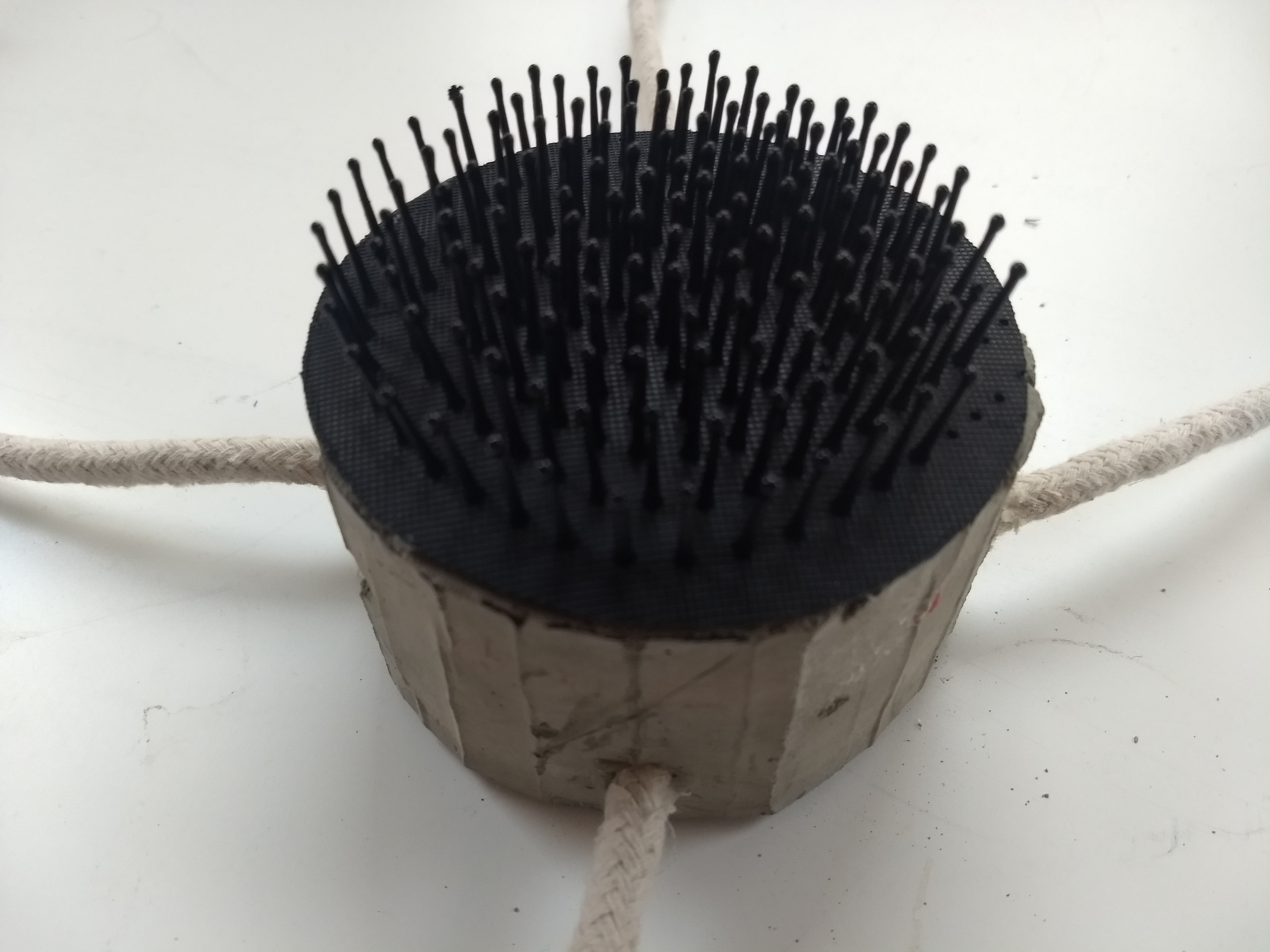
I then inserted a brick of the agar hydrogel into the cavity and glued some hairbrush bristles on top. The idea was that as the hydrogel expands, it pushes against the bristles radially which would serve as a visual indicator that the hydrogel is fully expanded and should be taken into the lab for testing.
Although we later realized that this idea used plastic for the interface and it would be counter productive to use plastic in a product meant to monitor ocean health
FINAL ITERATION
I 3D printed a mold for the marker and casted the agar gels into it
Final prototype showcasing the two states of the hydrogel marker. The one on the left indicates that the gel is fully saturated and should be taken for testing. This prototype uses all natural materials which wont negatively affect reef life. The agar is also safe for the fish to eat if it gets nibbled on by them.

